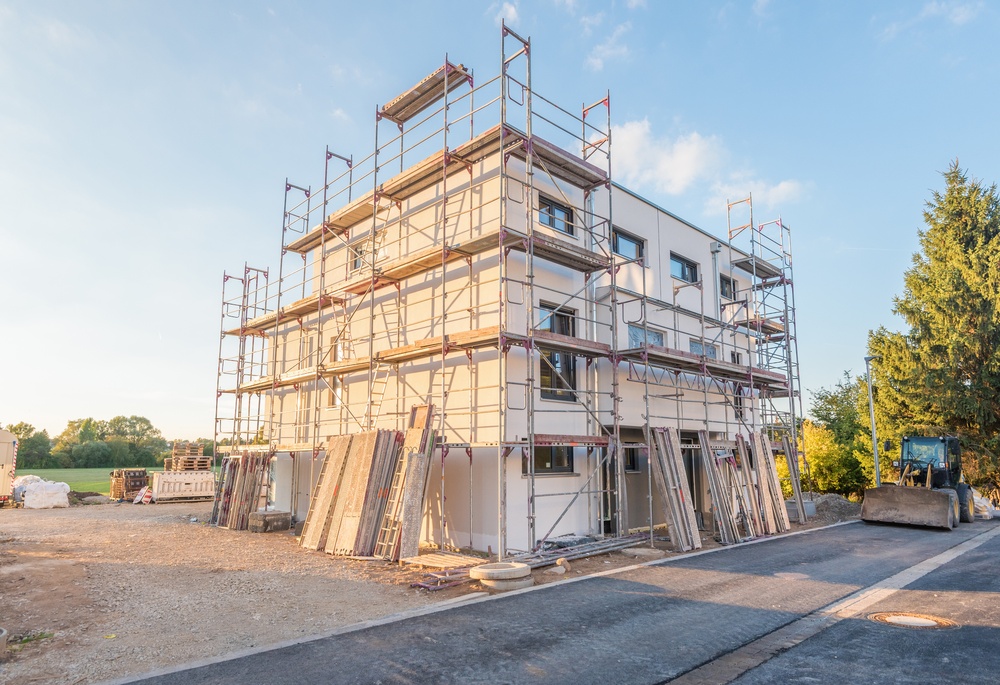Starting a home construction or renovation is exciting, but it also means you need to perform crucial site management tasks like ensuring safety and efficiency.
Picking the proper scaffolding is said to be important in achieving success in a home project. Nonetheless, selecting the most appropriate scaffolding can be overwhelming with so many options. To be able to pick the best one, you'll have to consider cost, Australian building codes, safety standards, and the project's unique needs.
Fortunately, this post will guide you in choosing the most suitable scaffolding for your home project. By following the pieces of advice presented below, you'll be able to make an informed decision and optimise your project's efficiency. Read on to learn more.
Assess Your Project Needs
Before diving in, evaluate factors such as your project's height, duration, and complexity. Different projects require different scaffolding, so knowing your needs is essential. For example, a one-storey paint job needs different scaffolding than a multi-storey renovation. If you're unsure, consult an expert like SkelScaff's residential scaffold and others.
In addition, think about the materials and tools you'll use during your project. Will you need to move heavy equipment or materials across the scaffold? If so, you must ensure that your chosen scaffolding can support the amount of weight put on them. You must consider access requirements, like ladders or staircases, too.
Further, consider the site's ground conditions and any potential obstacles. For instance, choose scaffolding with adjustable base plates for stability if your project is on a slope or uneven terrain.
Research Scaffolding Types
Scaffolding comes in many types, each with its pros and cons. Familiarise yourself with the most common types, including:
- Supported scaffolds are the most common form of scaffold. They consist of tubes and frames built from the ground up. And they’re suitable for most residential projects and offer a stable working platform.
- Suspended scaffolds are ideal for projects with limited ground access or when working at great heights. They have a platform hanging from ropes or cables attached to an overhead structure.
- Mobile scaffolds are similar to supported scaffolds, yet they’re mounted on casters. The design allows for easy movement around the worksite, making it useful for projects requiring frequent repositioning.
As a general reminder, consider your project's unique needs and limitations when looking into scaffolding types

Prioritise Safety
Safety should be your top priority when choosing scaffolding. Look for features like guardrails, toe boards, and non-slip platforms in the scaffolding to lower accident risks. To add, check if the scaffolding can support the weight of workers, tools, and materials.
Hiring a professional scaffolding company is vital for proper installation and maintenance. They have the expertise to set it up correctly and securely. Besides that, it's crucial to conduct regular inspections and care throughout the project. Doing so helps identify and address potential safety hazards.
Moreover, invest in safety gear for your workers, such as harnesses, helmets, and protective clothing. Providing safety training for anyone working on the scaffolding minimises risks as well.
Consider Cost And Efficiency
Although safety is crucial when constructing a house, finding an affordable and efficient scaffolding solution matters too.
Compare prices from different suppliers and consider the project duration and the frequency of use. Is it a short-term project? Renting may be cheaper than buying. Yet for long-term or multiple projects, investing in scaffolding could save money.
When comparing scaffolding options, remember the assembly and disassembly times. Some systems are faster to set up and dismantle, saving time and labour costs. For example, modular scaffolding usually takes less time to assemble than traditional tube and coupler scaffolds.
Comply With Regulations
As previously mentioned, ensuring your chosen scaffolding meets Australian building codes and safety regulations is vital. These include AS/NZS 1576 for materials and AS/NZS 4576 for safe use. Compliance with these standards ensures worker safety and prevents fines.
With that in mind, consider these tips when hiring a scaffolding company:
- Verify licenses and qualifications to confirm the provider can legally operate in your area. This gives you peace of mind that they know local regulations and can provide a compliant solution.
- Ask about safety procedures during installation, maintenance, and dismantling. A reputable company should prioritise safety and follow best practices.
- Ensure the company has adequate insurance coverage, including public liability and workers' compensation. This protects you from potential liabilities in case of accidents or damages.
- Discuss required compliance documentation, such as permits or inspection reports. A professional company should provide the necessary paperwork.
- Request a written contract outlining the work scope, pricing, and terms. This clarifies expectations for both parties and provides a legal framework for resolving disputes.
With these guidelines, you'll ensure that your project complies with existing Australian building codes.
Final Thoughts
Choosing the proper scaffolding for your home project is essential, as it affects safety, cost-effectiveness, and efficiency. Moving forward, start by exploring different scaffolding types, ensuring proper installation, and following Australian standards. Remember to seek professional advice and keep up with industry trends. This way, you'll gain a deeper understanding of the available scaffolding options and their pros and cons with regard to your custom home project.
Publisher Website: https://skelscaff.com.au/